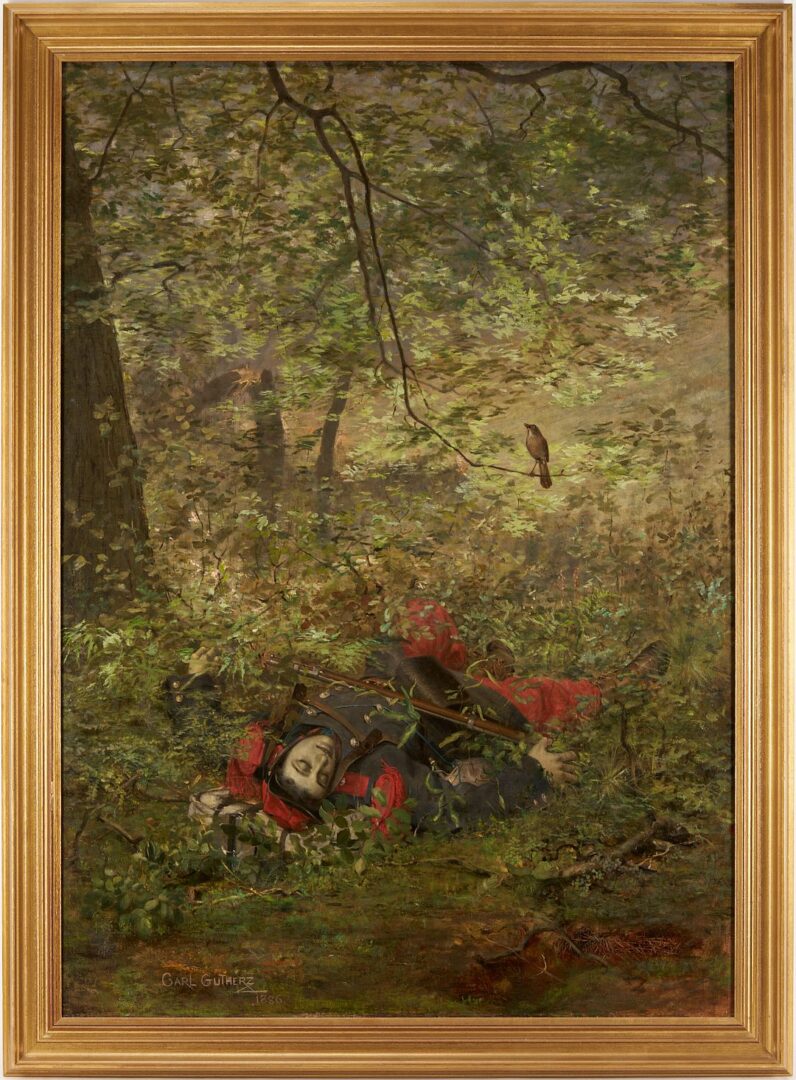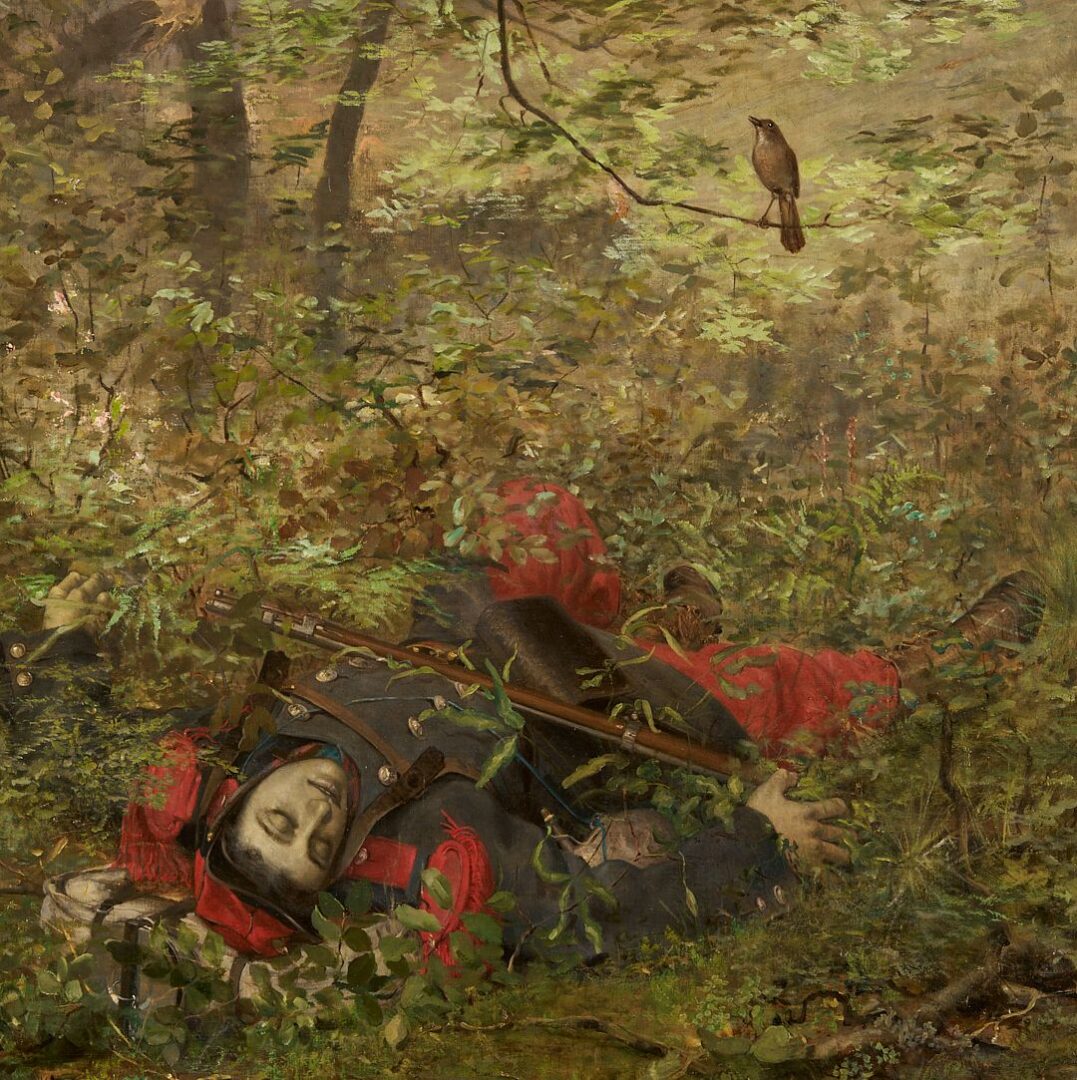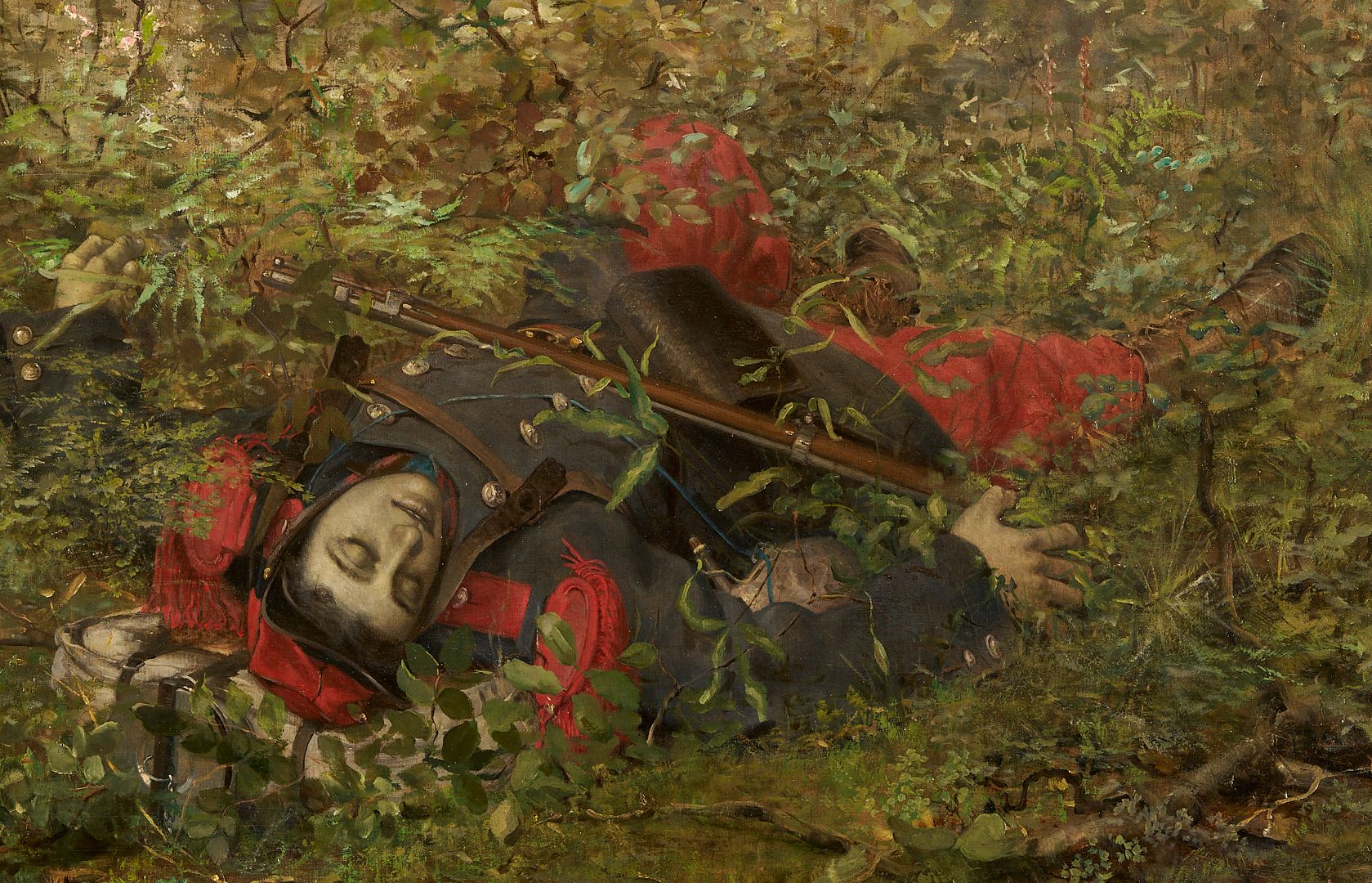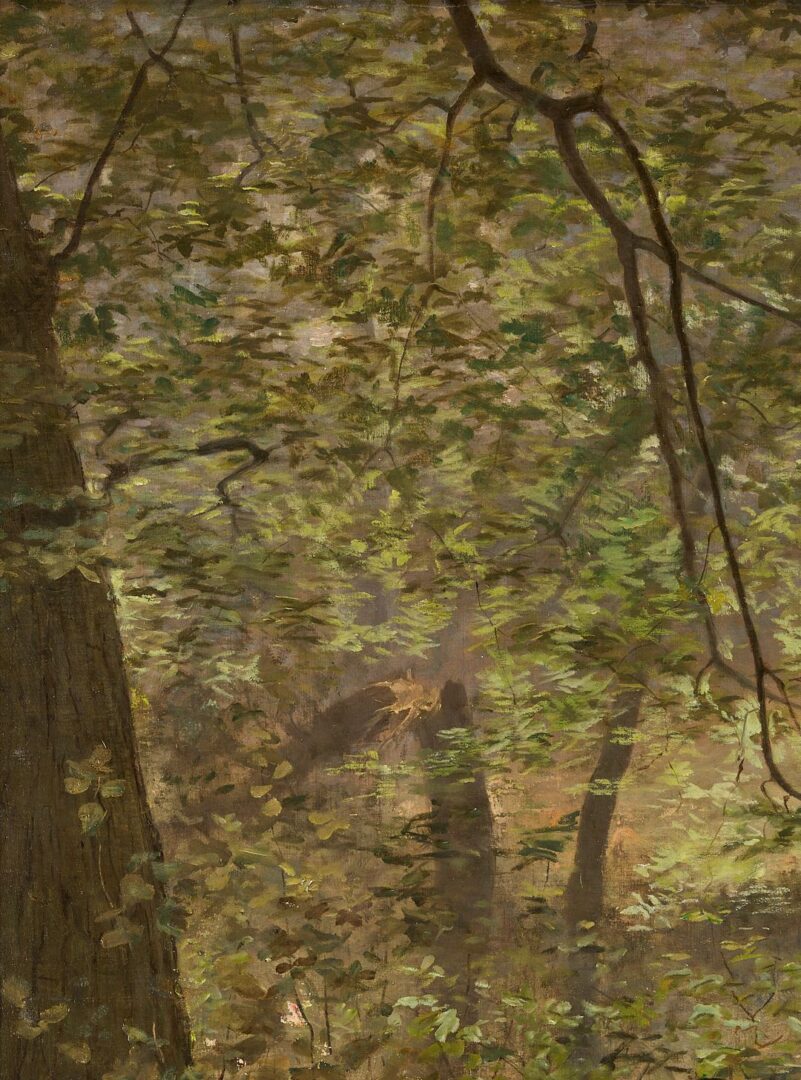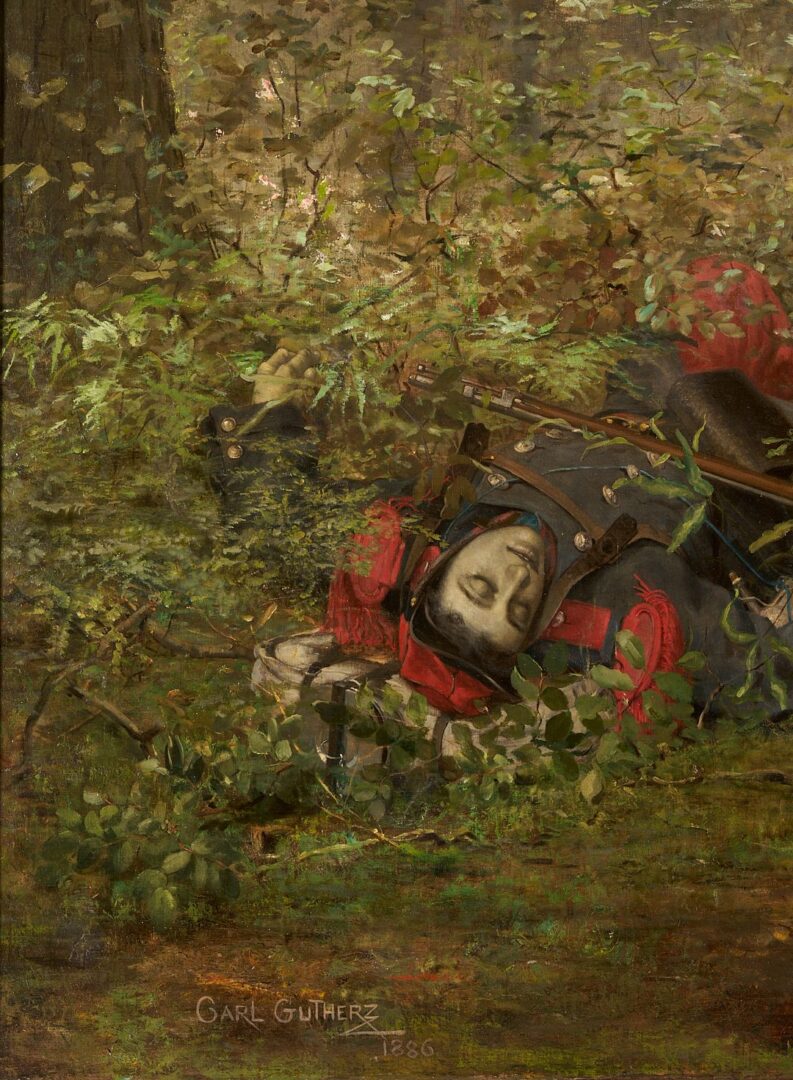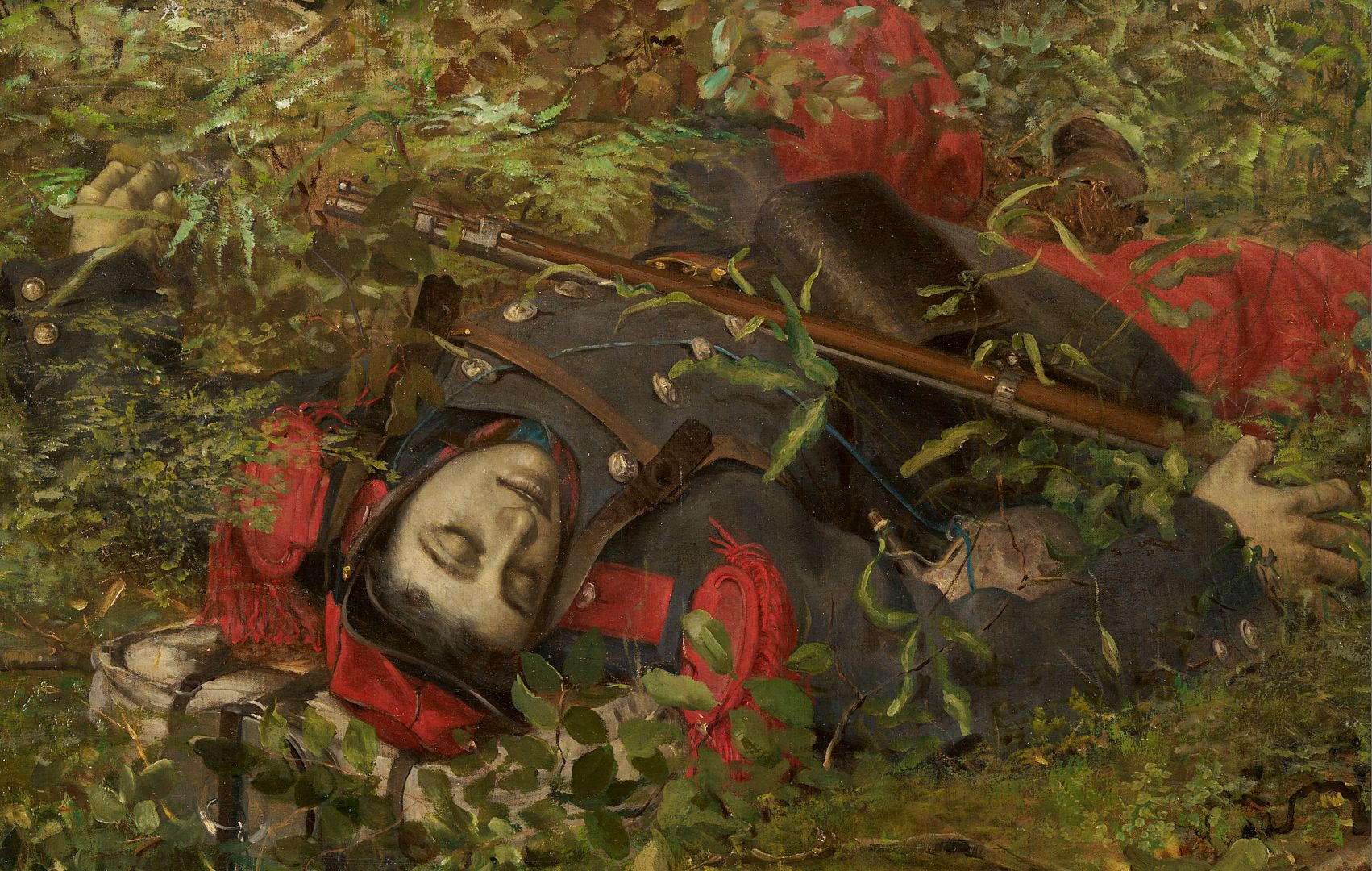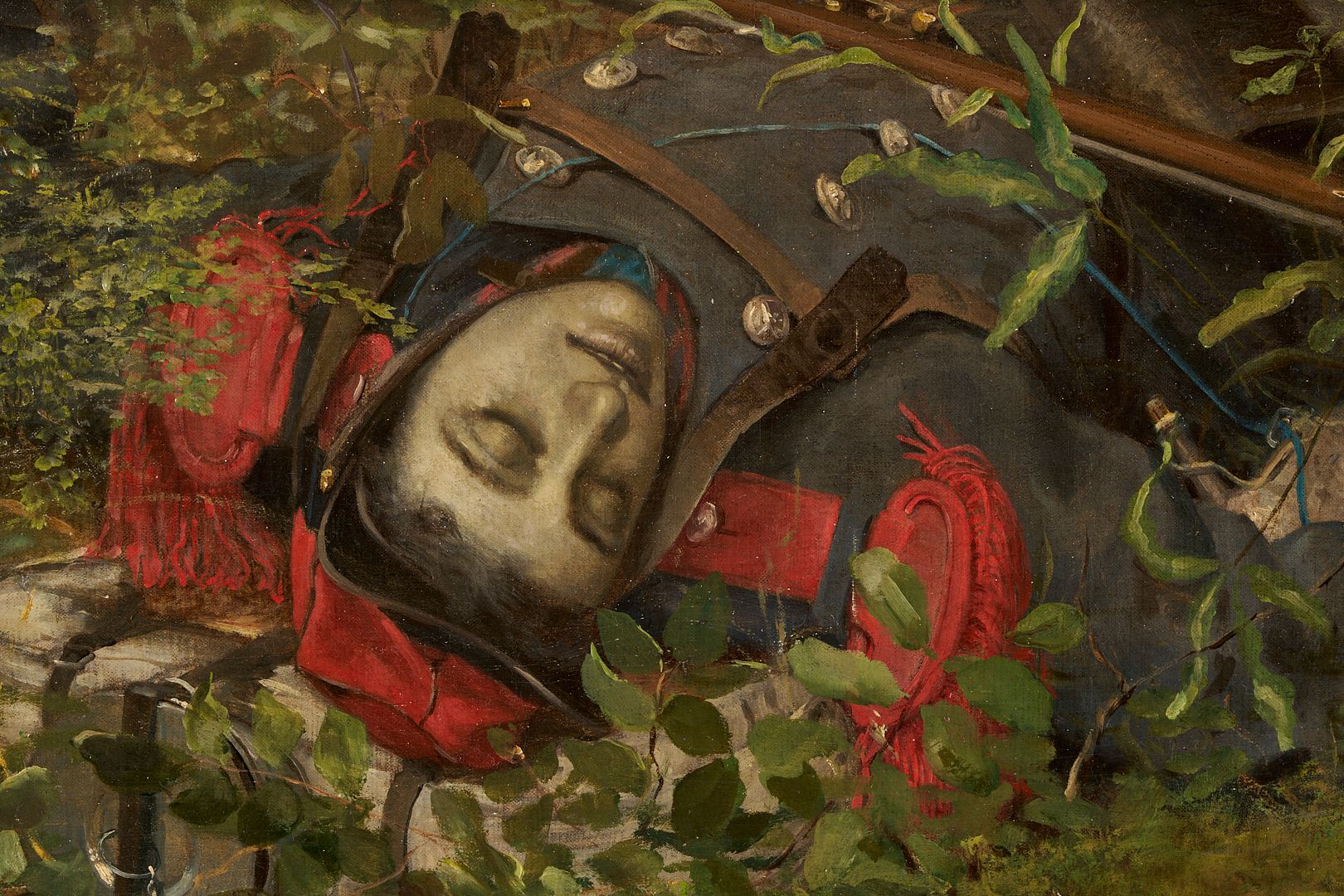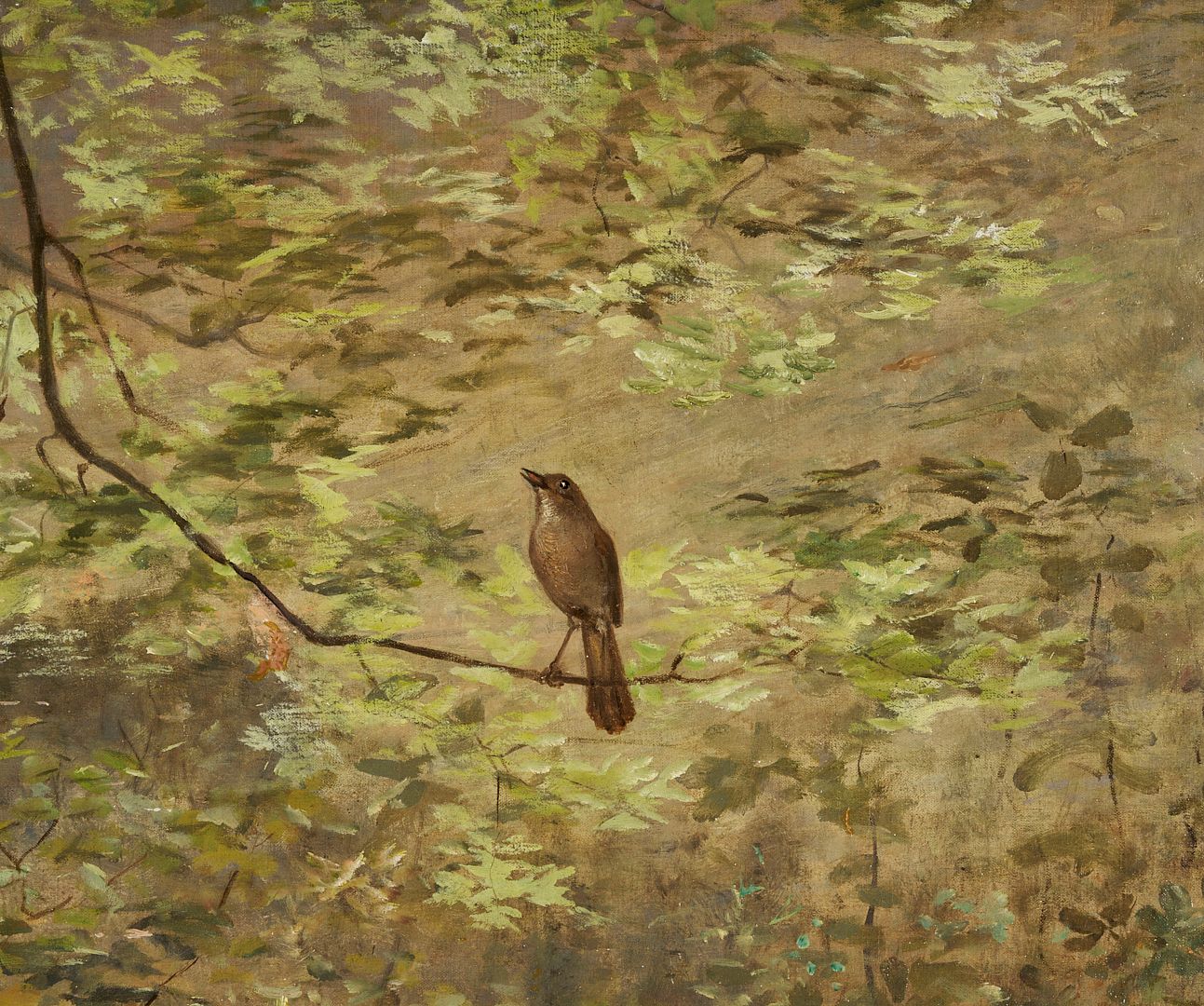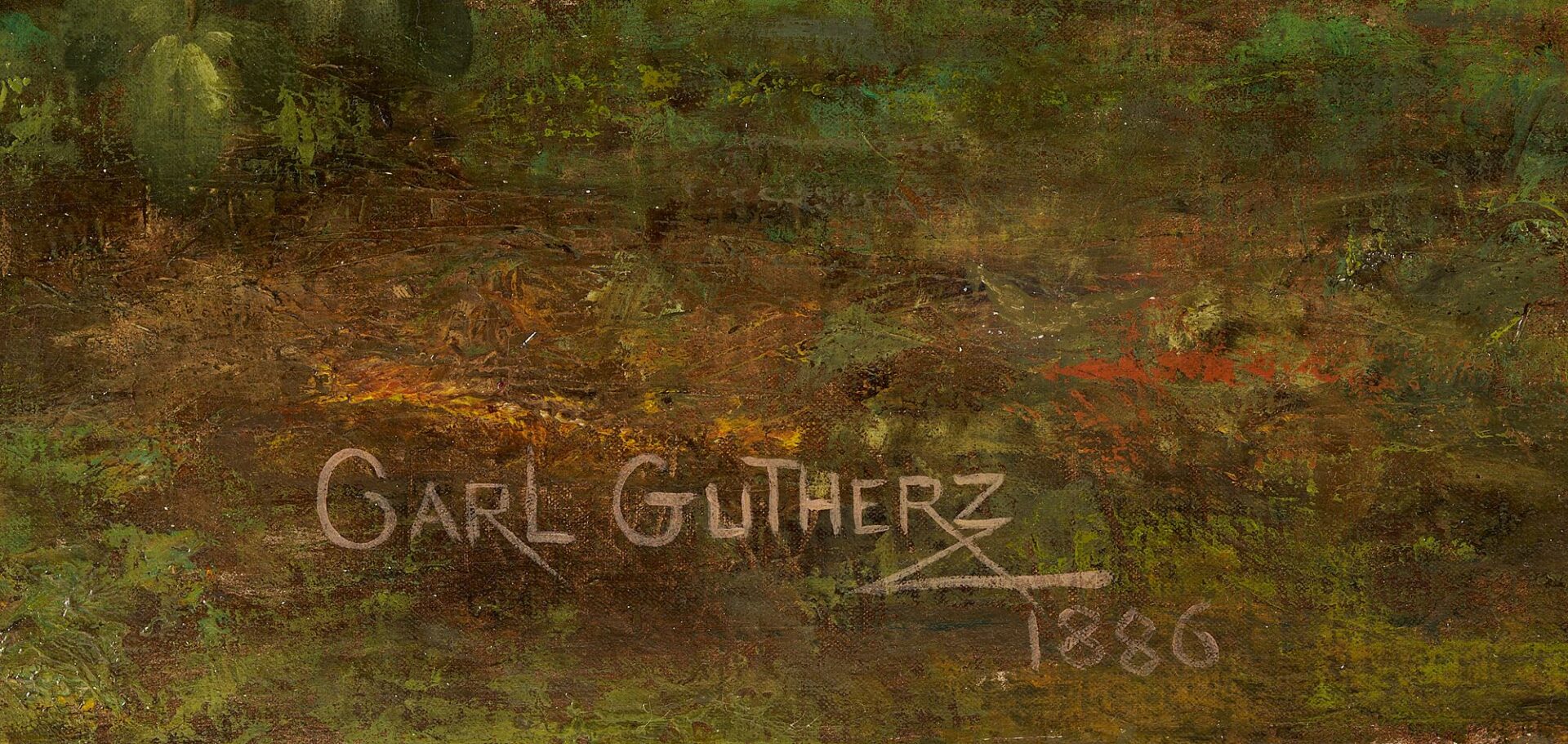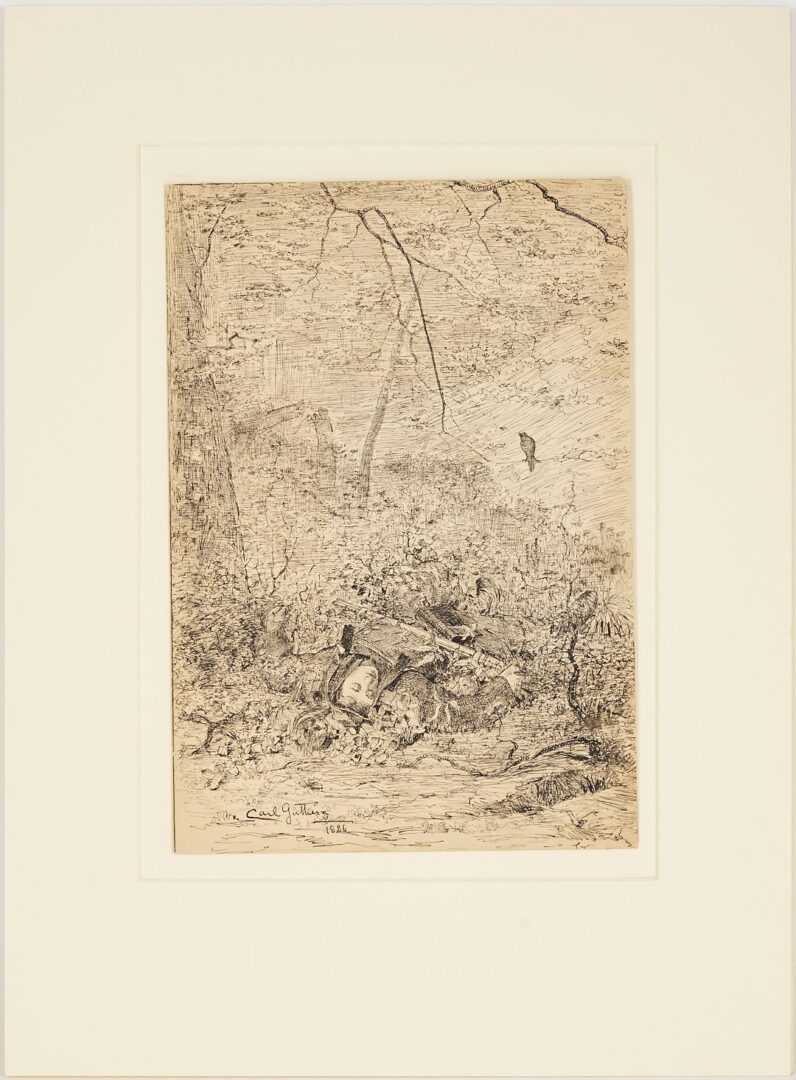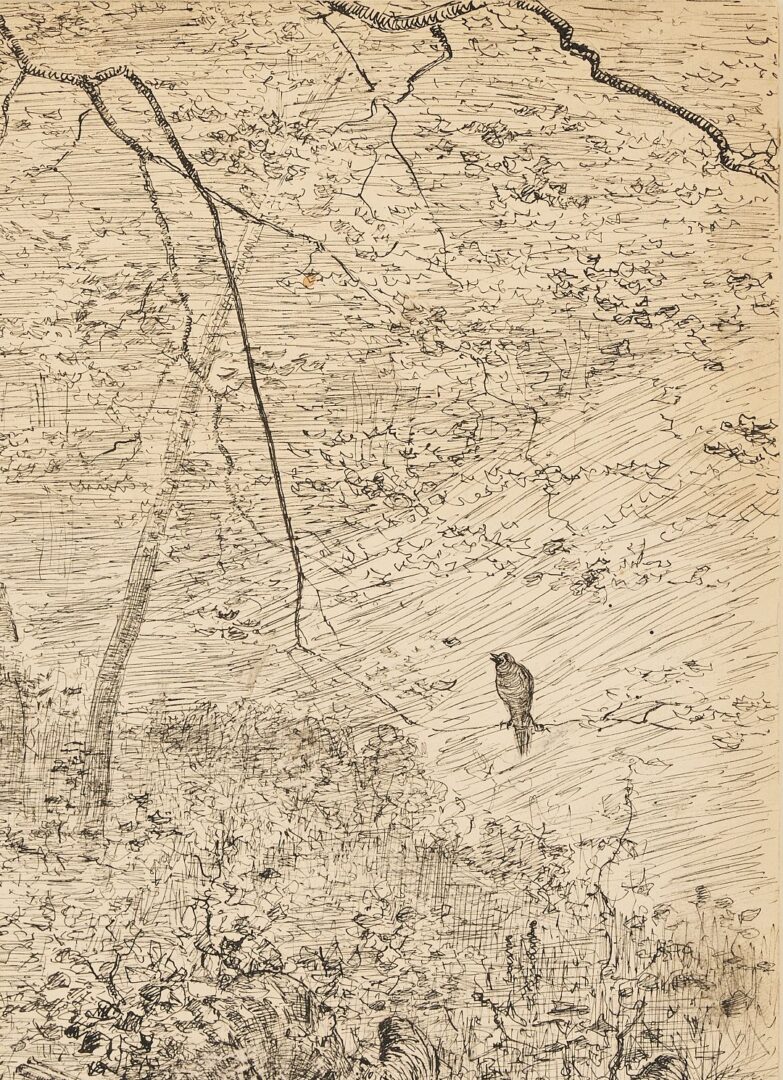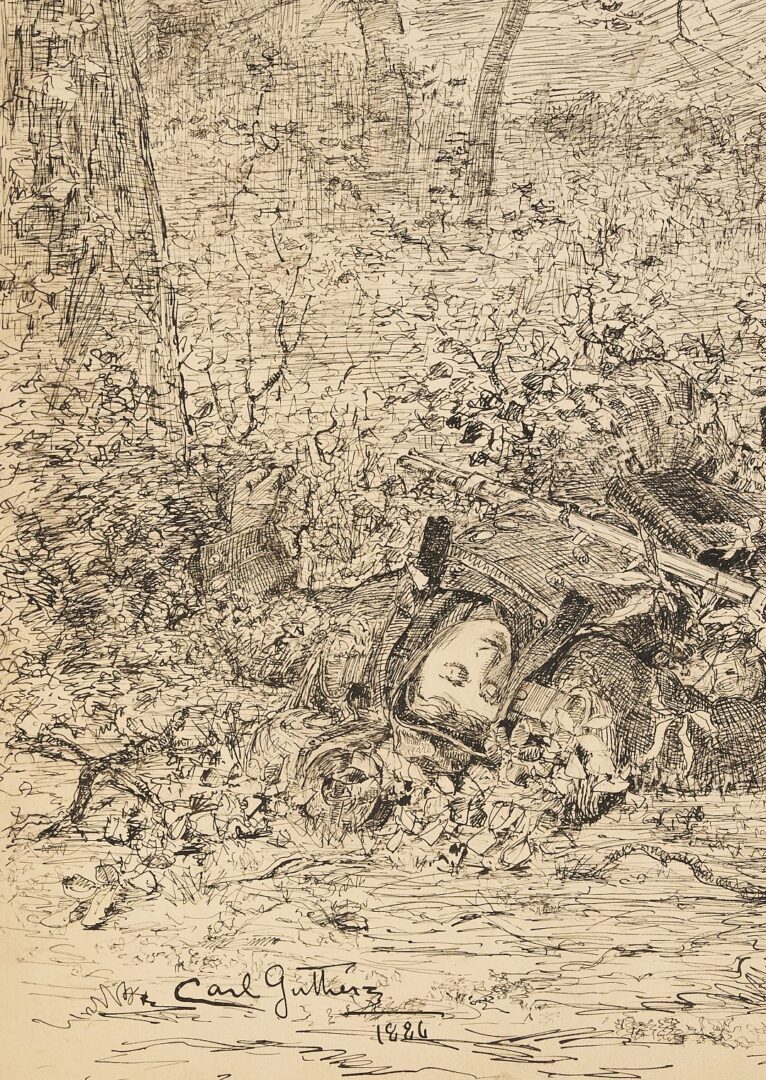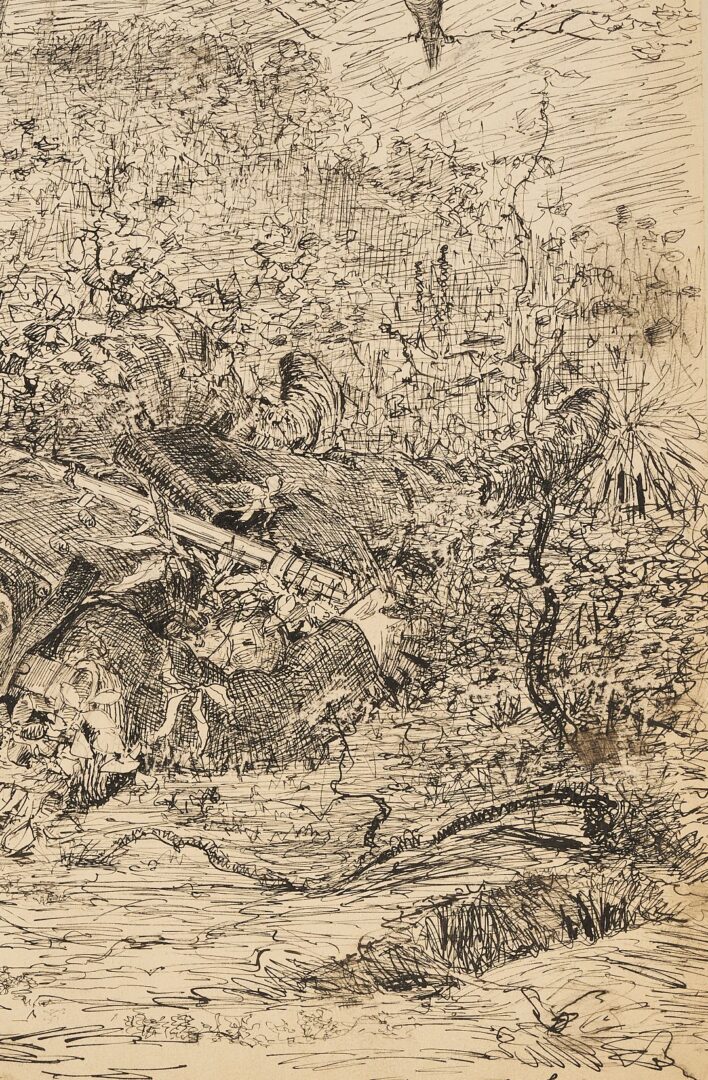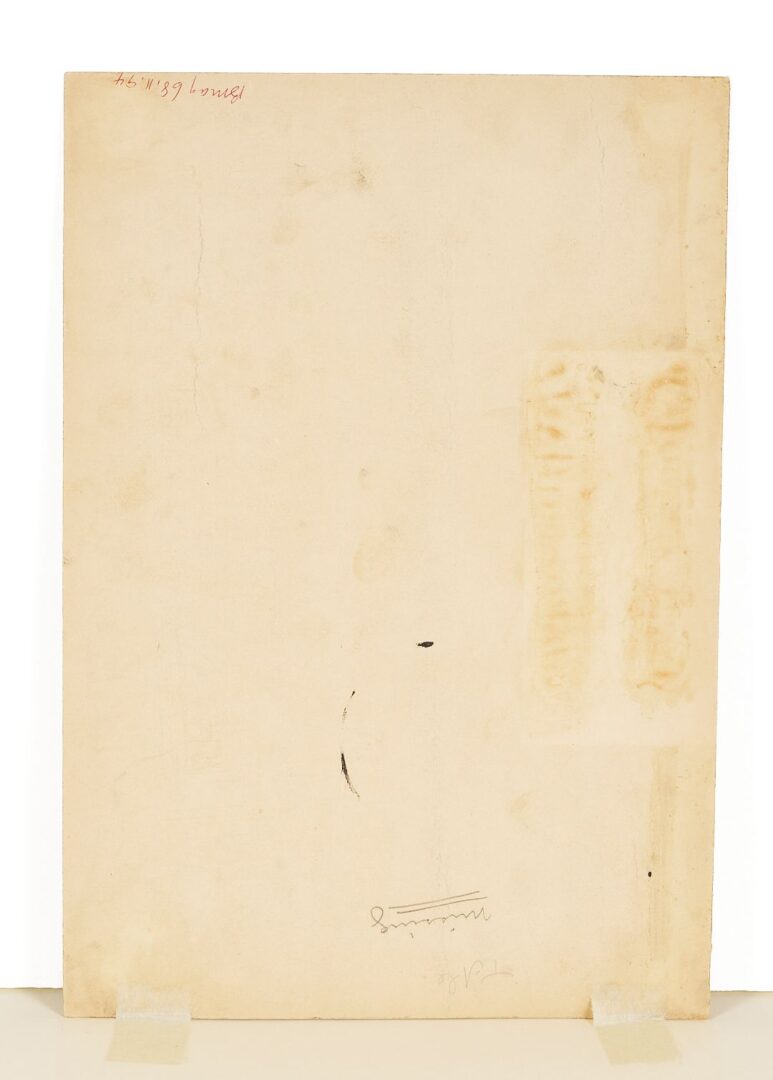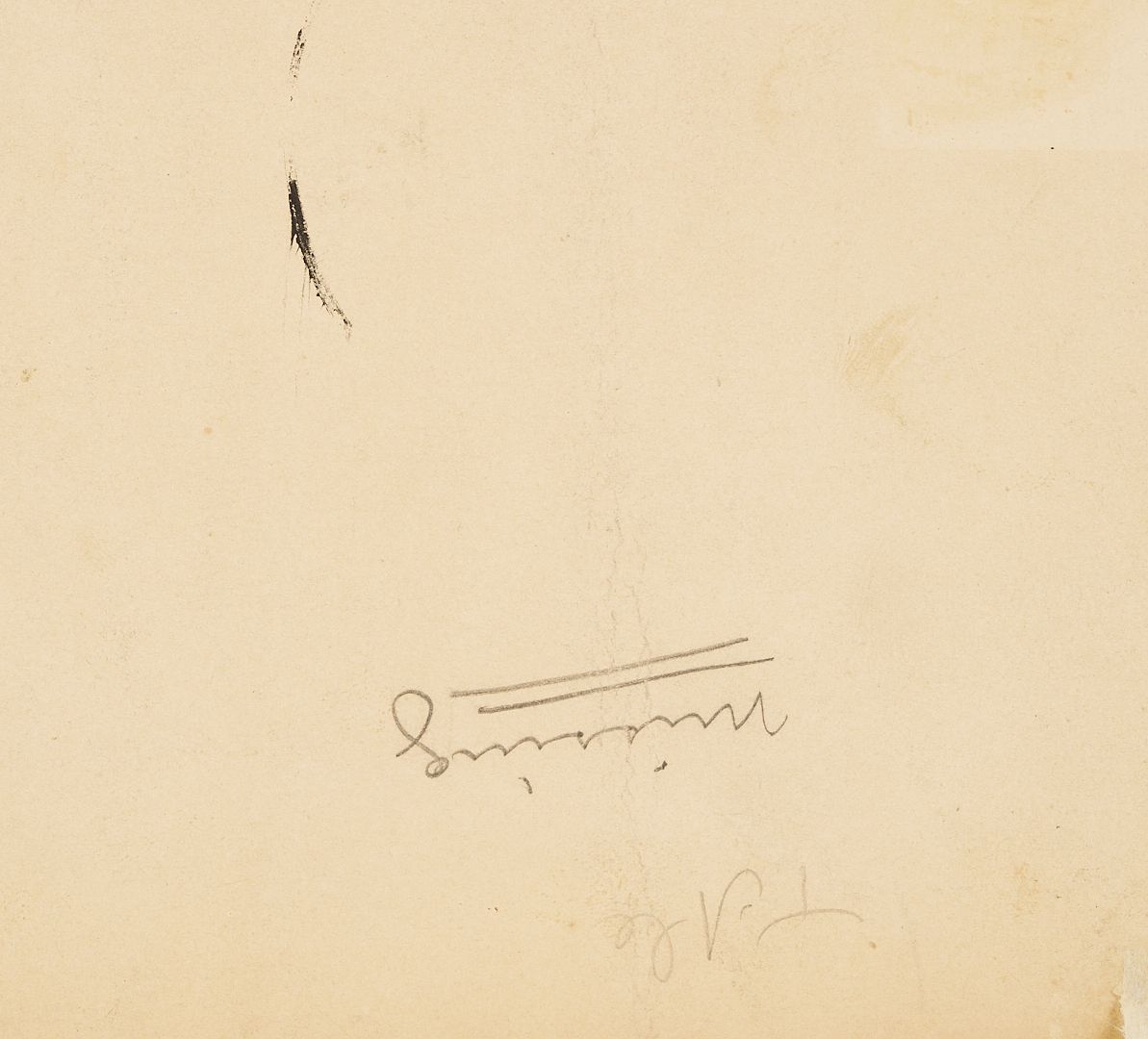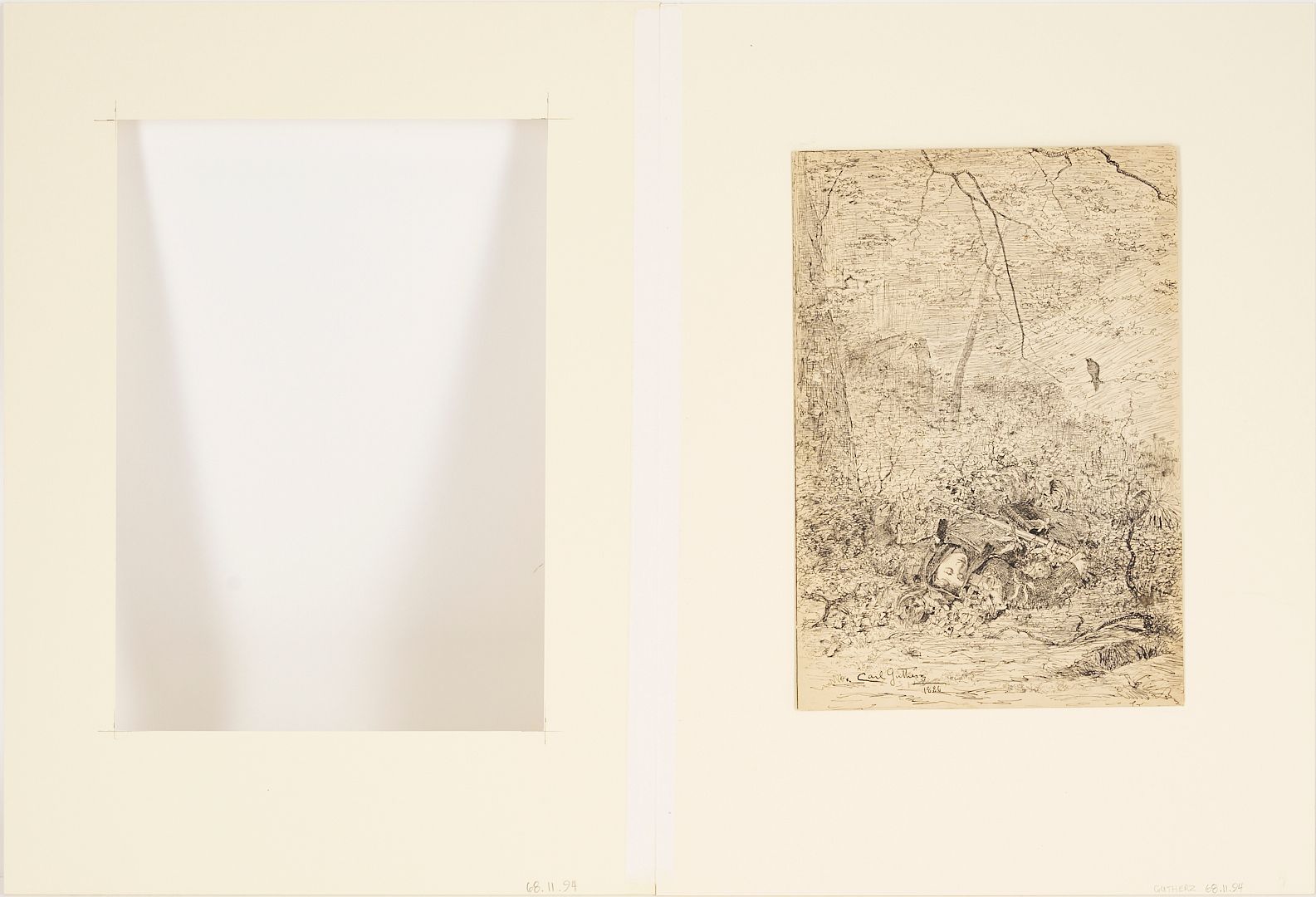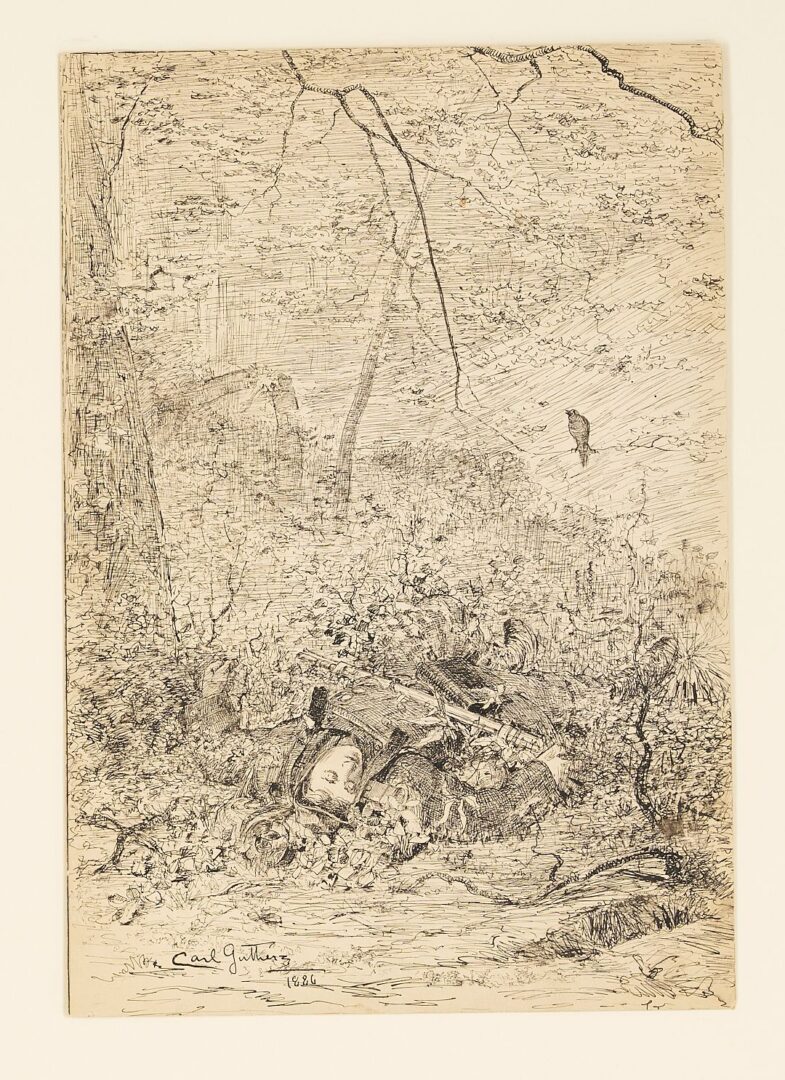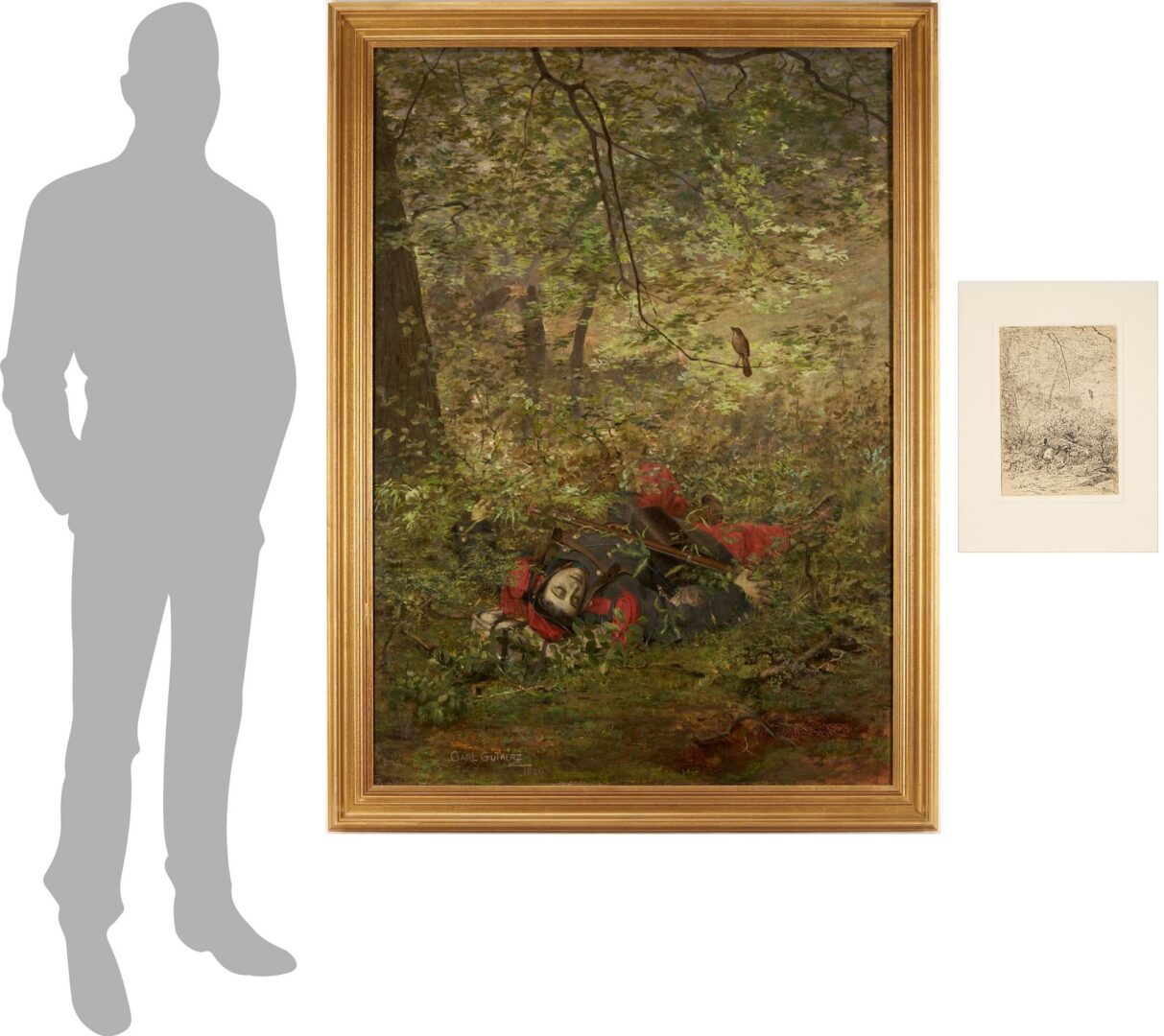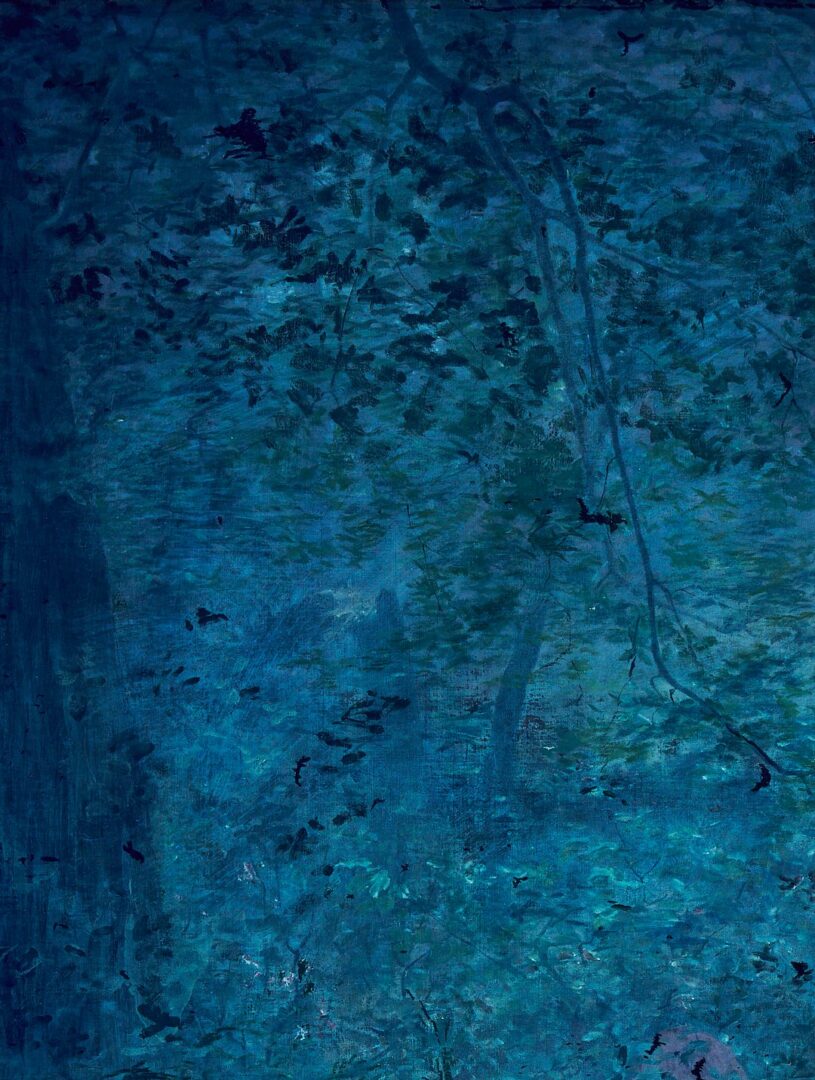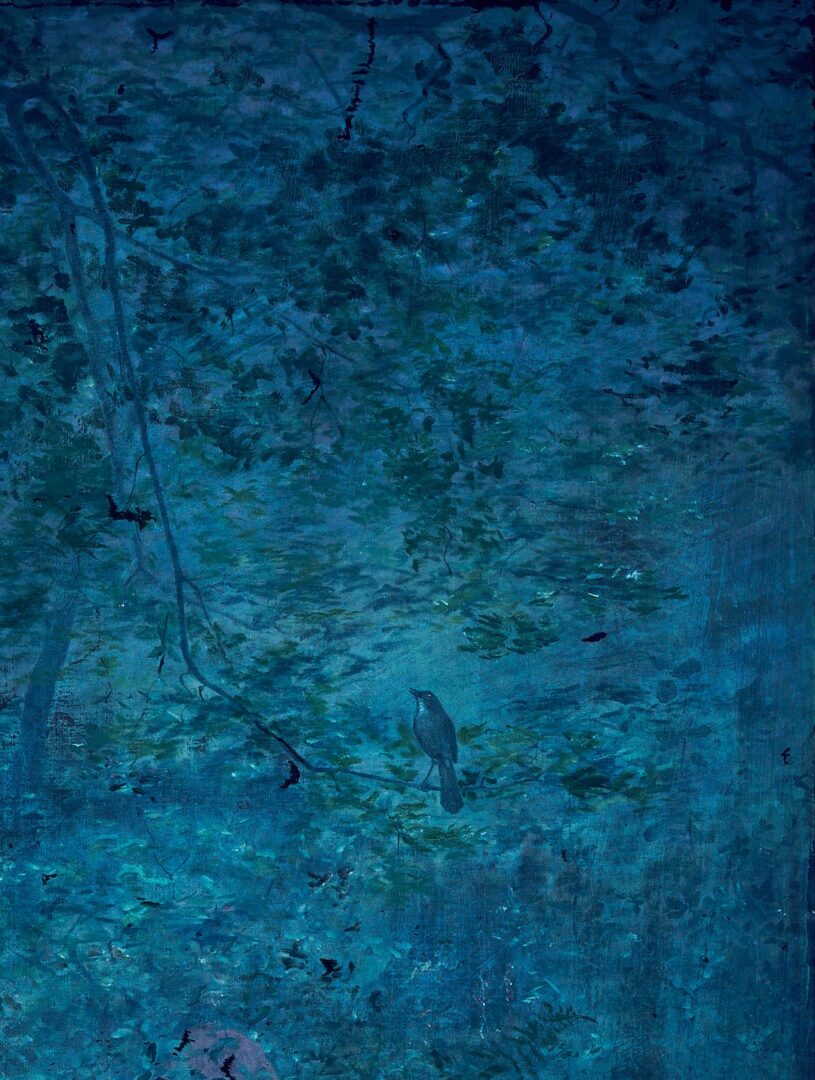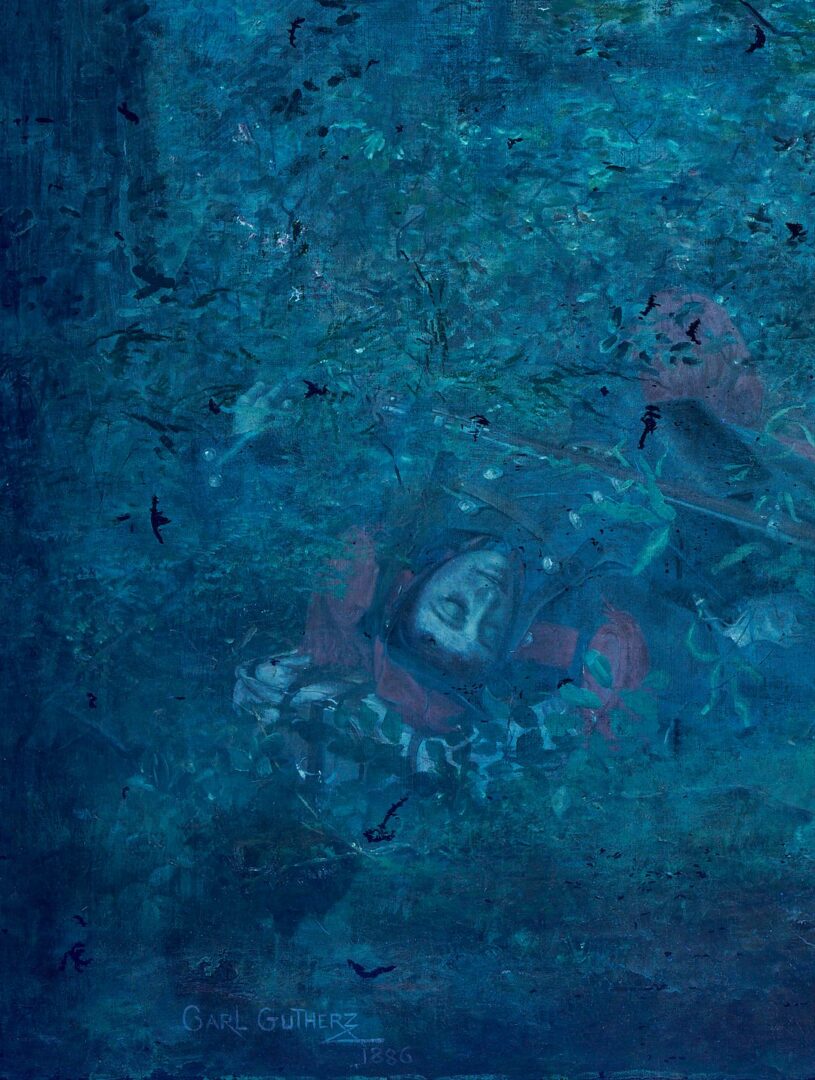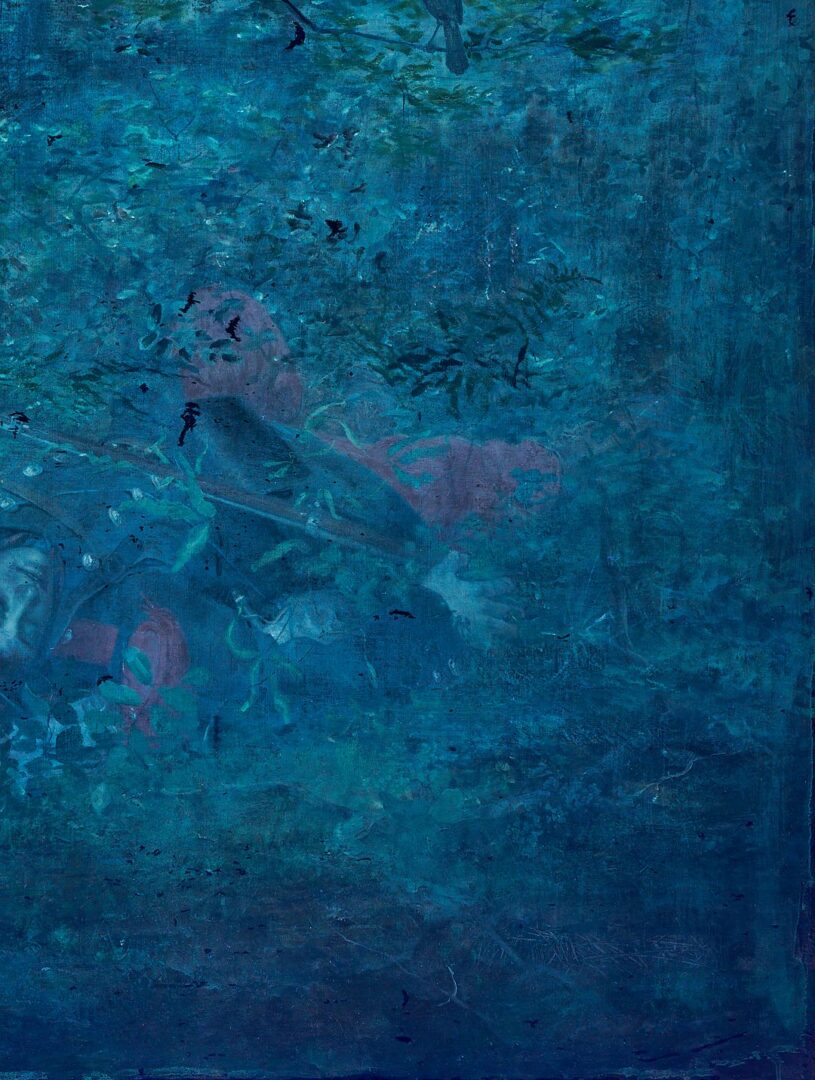SOLD! for $4,636.00.
(Note: Prices realized include a buyer's premium.)
If you have items like this you wish to consign, click here for more information:
Selling with Case- Low Estimate: $1,200.00
- High Estimate: $1,400.00
- Hammer Price: $3,800.00
- Share this:
Carl Gutherz or Guthers (Tennessee/Missouri, 1844-1907) oil on canvas painting, “Missing,” 1886. A fallen soldier lies partially hidden by foliage on a forest floor while a small bird perches on a branch above. He wears the uniform of a French foot soldier active during the Franco-Prussian War. Although the soldier’s body shows no sign of distress, the blasted tree in the background suggests the possibility of cannon fire. Signed “Carl Gutherz” and dated lower left. Housed in giltwood frame. Sight: 50 1/2 in. H x 35 1/2 in. W. Canvas: 51 1/8 in. H x 36 1/8 in. W. Frame: 58 1/2 in. H x 42 in. W. Note: Lot includes a preparatory ink drawing on card stock of the same composition, signed and dated 1886 lower left and inscribed “Missing” en verso plus museum accession number. Floated in a window mat. Sheet: 11 3/4 in. H x 8 1/4 in. W. Mat: 19 in. H x 14 in. W. Exhibition History: 1886 Paris Salon. Literature: This painting is discussed in detail in Stanton Thomas’s essay “Long Shadows of Blue and Gray: Carl Gutherz and the Civil War” in CARL GUTHERZ: POETIC VISION AND ACADEMIC IDEALS, eds. Marilyn Masler and Marina Pacini (Memphis, TN: Memphis Brooks Museum of Art, 2009) pp. 117-141. Francois Guillaume Dumas, CATALOGUE ILLUSTREE DU SALON (Paris; Librairie d’art L Baschet, 1886), 224. Dumas lists the painting as “Disparu-Lost.” Artist Biography: Guthers, who was born in Switzerland, emigrated as a child to the U.S. in 1851. He lived with his family in Memphis, Tennessee, through the Civil War and then studied at the Ecole des Beaux Arts in Paris and the Academie Julian, as well as in Munich, Brussels, and Rome. In 1875 moved to St. Louis, Missouri, where he taught at Washington University and helped establish the St. Louis School and Museum of Fine Arts. Gutherz continued to take portrait commissions from Memphis, however, and even designed costumes and floats for the annual Memphis Mardi Gras. In 1884 he returned to Paris, where he studied with Gustave Boulanger and Joseph LeFevre. Here, he became associated with the Symbolist movement and produced his most successful paintings including large allegorical works, often featuring Christian imagery. Back in the U.S. he was hired to create murals for institutions including the Library of Congress, the People’s Church of St. Paul Minnesota, and the Allen County (Indiana) Courthouse. A year before his death, he produced a design for an arts and sciences pavilion which was the basis for the development of the Brooks Memorial Art Gallery, later the Memphis Brooks Museum of Art. Source: The Tennessee Encyclopedia.
PROVENANCE: Deaccessioned by the Memphis Brooks Museum of Art to benefit the acquisitions fund.
CONDITION: Painting in overall very good condition. The canvas has been lined. With scattered areas of retouch primarily to edges and especially to old frame abrasions along upper edge, 17 in x 1/2 in, plus 1 1/2 in x 1/2 in passage to bag on figure’s torso. See UV photography. Drawing in overall very good condition, with even toning to sheet and a speck of liquid accretion to upper-center background. Sheet is hinge-mounted with archival tape.

